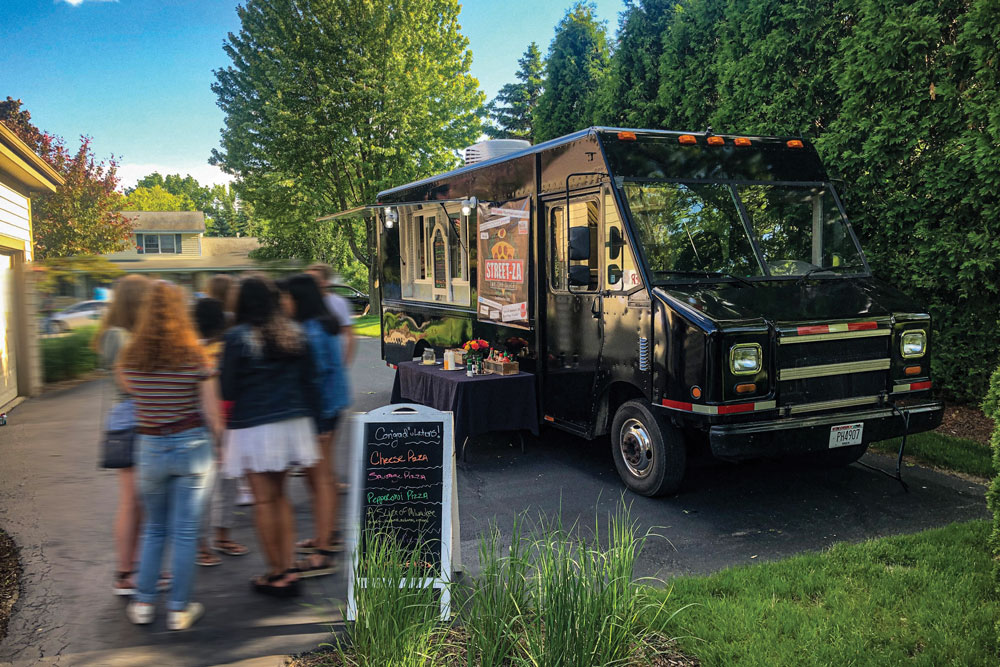Mobile catering offers many benefits—higher profit margins, marketing your brand to new audiences, and adding revenue to supplement your brick-and-mortar business—but operators who have experience with serving on the go agree: It’s not for the faint of heart. Between cramped spaces, demanding hosts (and hungry customers), and potential equipment breakdowns, it’s a must to hone your organization skills and minimize errors. Here, experts share their top tips for ensuring mobile success.
“Do a great job, no matter what. If 100 people show up instead of 50, find a way to feed them all. Each job is an audition for 50 or more new jobs…You want to cheerfully try to do whatever you can to make the event a success.”
— Liane Page, Big Green Truck Pizza
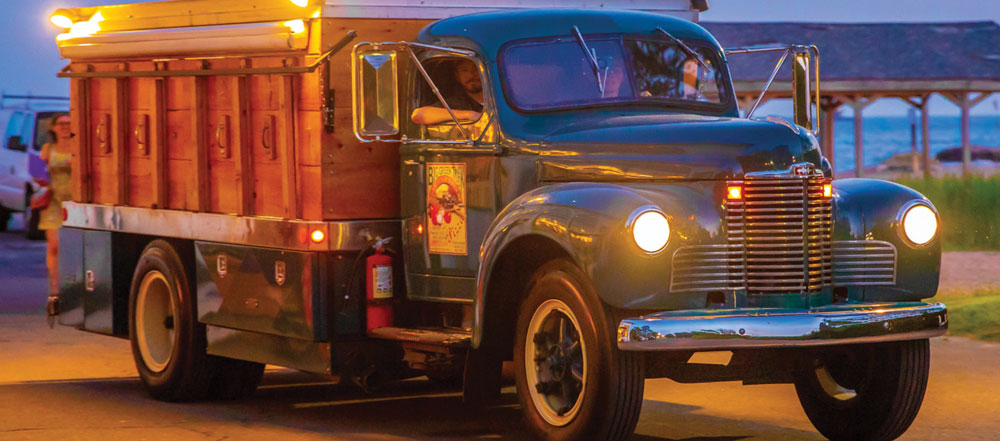
Big Green Truck Pizza
1: Build a top team.
Liane Page, general manager of Big Green Truck Pizza in New Haven, Connecticut, notes that catering customers always have many questions, no matter how simple the package. “Make sure you have a polite, patient person to handle your bookings and that only one person is taking bookings. You can’t afford to double-book,” Page advises. “Get the address, time and date right, and repeat that information in every phone call you make with the client.”
Furthermore, Page adds, your staff must be ready for public work, so sloppy attire, swearing, jokes and insults (sometimes customary behind closed kitchen doors) can’t happen at an event. “People who don’t know what they’re doing will not learn it quickly under pressure at an event,” she says. “Send your best pizza makers and waitstaff.” Also make sure everyone arrives on time, knows the route (GPS signals can fail), and has gotten a full night’s sleep. At Big Green Truck, reducing the hours each person works has been the single biggest help in reducing equipment breakage and packing errors.
“Equipment in general, like a topping table/cooler unit, is designed for a 68º kitchen, not for temperatures from -10º to 110º, depending on the day. Whatever normal maintenance you would expect, triple it!”
— Scott Baitinger, Streetza
“Having a team you trust is extremely important,” agrees Giovanni Colavita, CEO of Colavita USA in Edison, New Jersey. “You need to hire highly organized team players to schedule events, obtain permits, etc. We coordinate via a large Google spreadsheet, organized by month, and hold weekly check-in calls while maintaining constant contact by email.”
John Arena, co-founder of Metro Pizza in Las Vegas, adds that every event is special to the client, and catering customers often have an increased level of anxiety, making staff extra-important. “Identify and train an employee who manages catering orders specifically to give your clients a go-to contact and an extra level of confidence,” he suggests. “Having a touch of OCD helps—catering is all about attention to detail and the ability to solve problems on the fly!”
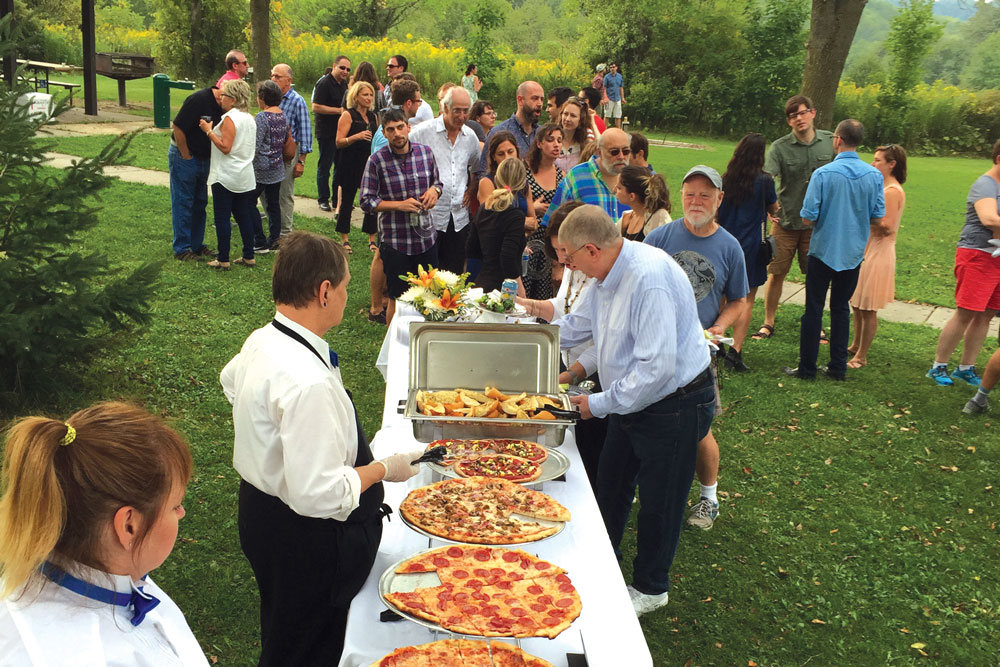
Streetza
2: Bring your A game.
Catering allows you to reach large numbers of guests who may never have been to your restaurant before, so it’s crucial to wow them. And, of course, working on the go can lead to a slew of unexpected surprises. “Do a great job, no matter what,” Page advises. “If 100 people show up instead of 50, find a way to feed them all. Each job is an audition for 50 or more new jobs. If the caterer is running around, stressed out and swearing because there are more people than expected, would you hire that guy? You want to cheerfully try to do whatever you can to make the event a success.”
Reliability and efficiency have been key for Scott Baitinger, partner at Streetza, a mobile catering operation in Milwaukee, including predicting the correct amount of food to stock and serving quickly, adjusting if necessary. “If we expect a higher volume than normal, we might remove a couple of items from the menu, as people taking five extra seconds to order quickly adds up with 200 people,” he explains. “And you can never cancel an event; if you don’t show up at one wedding, you’re out of the wedding business.”
“Always show up, even if you have to tow your truck or work in a deluge,” Page agrees. “People need to know they can count on you to come through no matter what.” And, of course, if your workers are in a jam, be prepared to send someone to help or run product out to them.
3: Invest in the right equipment.
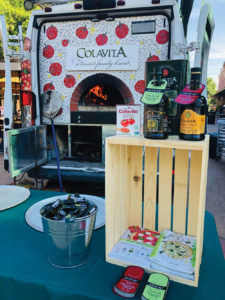
Colavita
Equipment, of course, starts with your vehicle. “We knew we’d be driving long distances, so we needed a vehicle that could handle that, plus the weight of a pizza oven, commercial refrigeration, wood and other supplies,” Colavita says. “Our truck fits a pizza oven nicely and can handle the weight of all our equipment while still getting 20 miles to the gallon.” Next, he selected an insulated oven made specifically for mobile purposes—thermal insulation is important when working with fire in close proximity to a gas tank. And, with pizza, fermentation creates a volatile substance, so ample refrigeration is a must.
The worst part of mobile catering, Baitinger says, is the equipment concerns that accompany a moving vehicle. First, he advises, invest in a reliable, low-mileage truck, and be prepared for items like pizza stones to crack in transit. “Equipment in general, like a topping table/cooler unit, is designed for a 68˚ kitchen, not for temperatures from -10˚ to 110˚, depending on the day,” he says. “We are now having a new engine installed and need a new compressor every year. Whatever normal maintenance you would expect, triple it!”
“Identify and train an employee who manages catering orders specifically to give your clients a go-to contact and an extra level of confidence. Having a touch of OCD helps—catering is all about attention to detail and the ability to solve problems on the fly!”
— John Arena, Metro Pizza
4: Determine your goals, budget and limits.
Colavita stresses that understanding your goals and bottom line are crucial for mobile catering. “Obviously, there are food costs, but there are also truck payments, insurance, maintenance, equipment, and travel costs,” he says. “Also, pizza events are time-intensive. A wood-fired oven adds more time to the prep (up to 90 minutes), and it’s physically demanding. Setup and tear-down can often take as much time as the actual event.”
Along with this, Colavita adds, you want to offer a tried-and-true menu. At first, his company attempted complicated pizzas with multiple toppings, but the additional prep work made for difficulties. “In the beginning, start with easier recipes, and then branch out after you can execute them with ease,” he advises.
Meanwhile, Baitinger realized that allowing the host to pick five pizzas, charging a certain amount per head for all you can eat, was a better system than selling per pie. “The host knows exactly what the price will be, and there are no surprises,” he says. “And though other operators do wood-fired, we chose a propane deck oven for simplicity and to limit waiting times. We found that an electric oven took too long to get to temperature and required a huge generator, while we thought that a conveyor oven, though easier, would denote lower quality and offer less of a show.”
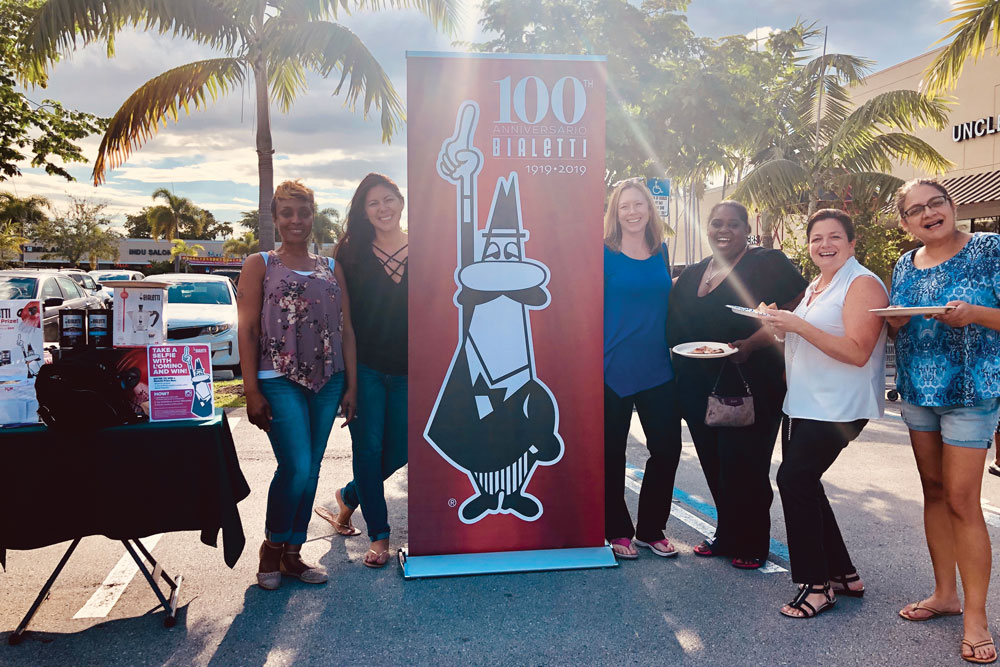
Colavita
5: Build your business with smart marketing.
Colavita advises reaching out to your contacts and maintaining personal relationships. “We talk to them about their projects and have even offered pizza lunches at corporate headquarters to sell them on the idea,” he says. “Our mobile kitchen is a grassroots marketing tool, so we need to have direct contact with our customers and have personal conversations.”
Baitinger makes sure to advertise his mobile catering service on all marketing materials and on the truck itself, and he taps social media to spread the word. “With permission, we take pictures and post content from events on Facebook, Instagram and Twitter,” he says. “Through Facebook advertising, we can also target lookalike audiences, such as future brides who are still in the planning stages, through specific keywords.”
Tracy Morin is PMQ’s senior copy editor.

